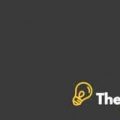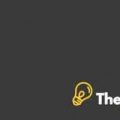
Problem Statement
The problems that A&F would face in the future were to preserve its competitive advantage in local and international markets where existing strong competitors, new entrants from US and overseas target to imitate A&F strategies. Moreover, it has been concluded that the major competitive strength of A&F is their capability in extracting the values from strong brand recognition, which their customers can narrate to, and showing this value through their product and marketing message. Therefore, in answering this challenge, A&F has to make sure that they are able to:
1. Maintain their brand name and connectivity with their very vibrant target market.
2. Examine the industry dynamics before their rivals.
3. Improve their financial capability to invest in the international market.
4. Overcome their social and cultural problems, especially history of lawsuits against A&F Co.
Case Analysis and Findings
A&F’s Industry and Competitive Environment Analysis
Examining A&F’s industry and competitive environment initiates with identifying the
industry’s leading economic characteristics. The market dimension and growth rate of apparel industry is slightly large and it is growing a reasonably fast pace with the changes in lifestyles. A&F’s three main competitors are, American Eagle Outfitters Inc. (AEOS), Gap Inc. (GAP) and J. Crew Group, Inc. Among these three competitors, GAP is the strongest amongst these competitors with 3,000 stores worldwide and it generated $16 billion revenue in 2005. The industries are characterized by rapid product innovation that require designer, merchandisers and marketer to know better what the consumer wants and also strong product innovation potentials such as continuous product innovation is primarily a survival strategy in this industry.
After extracting an idea of general economic characteristics of the apparel industry, more examination should target on the competitive situation of this industry. The most common and widely used tool for assessing the strength of the industry’s competitive forces is the five forces model of competition.
Comparatively low barriers to entry: As the cost to buy and produce apparel
is minimal. In the field retail industry, economies of scale offer a considerable
advantage over the local stores. The low growth in this industry also “makes it less
attractive to new entrants”.
Rivalry among the firms is moderate to high: The rivalry among competitors is strong and that is why product innovation is high in this industry, which is done in order to maintain their position in the market through product differentiation. The apparel industry mostly consists of several major rivals of equal size.
Large Number of Substitutes: However, some wears may not be thought straight substitutes because of brand recognition, once the name brand has been indifferent; one object of clothing becomes difficult to tell separately from a similarly looking object of clothing.
Little power of Suppliers:The suppliers n this industry also hold a little power as the company purchases inventories from many factories and suppliers around the world, primarily located in South East Asia and South America, thereby allowing retailers to exercise control in negotiating prices.
Medium Power of Buyers: Customers as buyers are willing to pay a premium price for apparent quality and “fashion recognition”, but the pricing points lean to be very elastic. It may be expected buyers to hold minimal power over their suppliers because of the division of the retail industry.
Above analysis expresses most of the collective forces of the five competitive forces is moderate to weak, which indicate that the apparel industry is still competitively attractive in the sense that A&F can convincingly expect to earn fine profits.
After the Porter five competitive forces analysis, the next analysis is to determine the driving forces that might incline in reforming the industry landscape and changing competitive condition. The potential driving forces for A&F in the apparel industry are as follows:
Increasing globalization – Competition in apparel industry starts to shift from a regional market focus to international market. Globalization may become a strong driver to expand its current market share. In addition, the A&F planned to put its first footstep in European store in London in 2007.
Emerging new Internet potentials and applications – Today customer is well awared of every product specification because the internet has made it easy to explore information for the consumer. The capability to reach consumers via the internet provides buyers an amazing ability to explore the product offerings from any brands and shop the market for the best value. A&F enhanced their capabilities to sell the product through websites that are equipped with shopping-cart technologies................................
This is just a sample partial case solution. Please place the order on the website to order your own originally done case solution.













